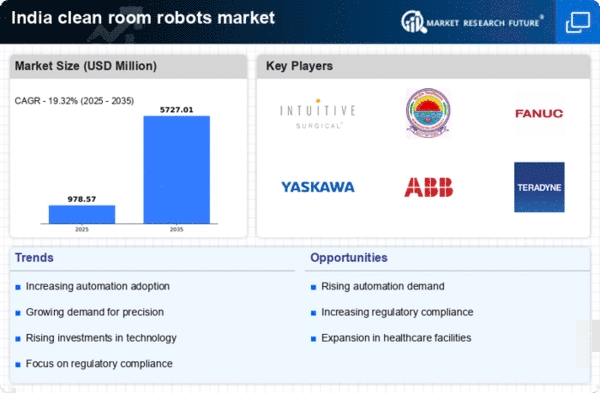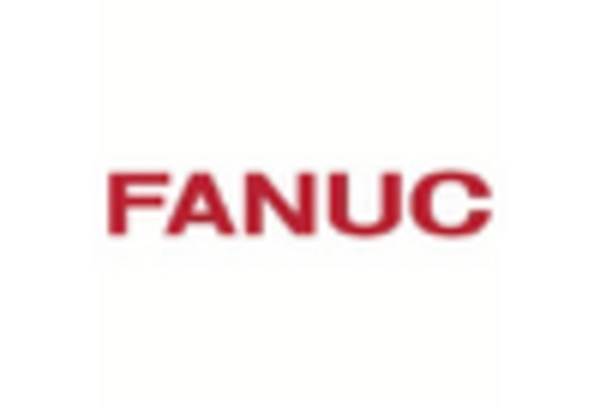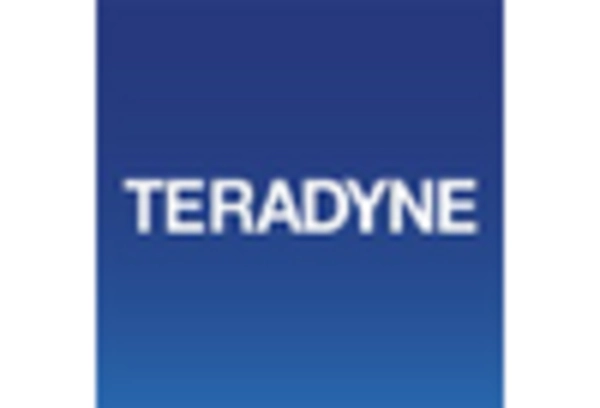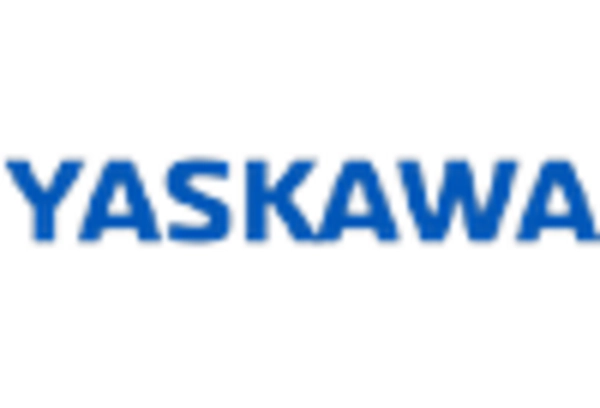Government Regulations and Standards
The clean room-robots market is significantly influenced by stringent government regulations and standards aimed at ensuring product safety and quality. In India, regulatory bodies such as the Central Drugs Standard Control Organization (CDSCO) impose rigorous guidelines for industries that operate in clean environments. Compliance with these regulations necessitates the adoption of advanced technologies, including robotics, to maintain the required cleanliness levels. As a result, companies are increasingly investing in clean room-robots to meet these standards, which is likely to propel market growth. The emphasis on regulatory compliance not only enhances product integrity but also fosters consumer trust. This regulatory landscape, therefore, serves as a crucial driver for the clean room-robots market, compelling industries to adopt automated solutions to adhere to evolving standards.
Rising Demand for Clean Environments
the clean room-robots market in India is seeing a surge in demand due to the increasing need for sterile environments across various sectors. Industries such as pharmaceuticals, biotechnology, and electronics are particularly driving this trend, as they require stringent cleanliness standards to ensure product quality and safety. The market is projected to grow at a CAGR of approximately 15% over the next five years, reflecting the urgency for automation in maintaining clean environments. As companies strive to comply with regulatory requirements, the integration of robots into clean room operations appears to be a viable solution. This shift not only enhances operational efficiency but also minimizes human error, thereby fostering a safer working environment. Consequently, the rising demand for clean environments is a pivotal driver for the clean room-robots market in India.
Growing Awareness of Health and Safety
The growing awareness of health and safety standards is significantly impacting the clean room-robots market in India. As industries become increasingly cognizant of the importance of maintaining hygienic environments, the demand for automation in clean rooms is on the rise. This awareness is particularly pronounced in sectors such as pharmaceuticals and healthcare, where the consequences of contamination can be dire. The integration of robots into clean room operations is perceived as a proactive measure to mitigate risks associated with human intervention. Furthermore, the emphasis on health and safety is likely to drive regulatory changes, further encouraging the adoption of clean room-robots. This heightened focus on health and safety standards is, therefore, a critical driver for the clean room-robots market, as it compels industries to invest in automated solutions to safeguard their operations.
Technological Integration and Innovation
Technological integration plays a vital role in shaping the clean room-robots market in India. The advent of advanced robotics, artificial intelligence, and machine learning has revolutionized the way clean room operations are conducted. These technologies enable robots to perform complex tasks with precision and efficiency, thereby enhancing productivity. The market is witnessing a shift towards more sophisticated robotic systems that can adapt to various clean room conditions. For instance, robots equipped with AI capabilities can analyze environmental data in real-time, ensuring optimal performance. This trend is expected to drive market growth, as companies seek to leverage innovative solutions to improve operational efficiency. The continuous evolution of technology in the clean room-robots market indicates a promising future, with potential advancements likely to further enhance the capabilities of these systems.
Increased Investment in Research and Development
Investment in research and development (R&D) is emerging as a significant driver for the clean room-robots market in India. As industries recognize the importance of maintaining clean environments, they are allocating substantial resources towards developing advanced robotic solutions. This focus on R&D is aimed at enhancing the functionality and efficiency of clean room-robots, enabling them to perform a wider range of tasks. Companies are collaborating with research institutions to innovate and refine robotic technologies, which is likely to lead to the introduction of more effective solutions in the market. The emphasis on R&D not only fosters technological advancements but also positions India as a competitive player in the global clean room-robots market. This trend suggests that sustained investment in R&D will be crucial for driving future growth in the clean room-robots market.

















Leave a Comment